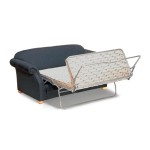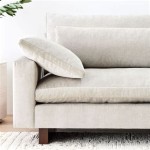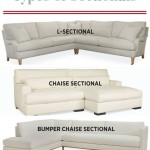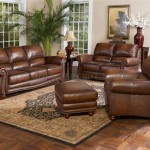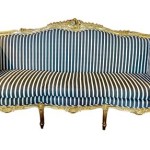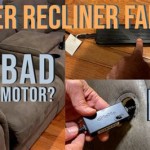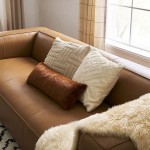Do Cats Claw Leather Sofas? Understanding the Risks and Prevention Strategies
Leather sofas are often considered a sophisticated and durable furniture choice, adding a touch of elegance to any living space. However, for cat owners, the allure of leather can quickly be overshadowed by the worry of potential damage from feline claws. The question of whether cats claw leather sofas is not a simple yes or no. It depends on a multitude of factors, including the type of leather, the cat's individual personality, and the preventive measures taken by the owner. This article will explore the reasons why cats might be attracted to clawing leather, the types of leather that are more or less susceptible to damage, and effective strategies to protect your investment and maintain a harmonious coexistence between your cat and your cherished sofa.
Cats scratch for various reasons, primarily related to physical and behavioral needs. Scratching helps them to remove the dead outer layer of their claws, keeping them sharp and healthy. It also serves as a form of exercise, stretching their muscles and tendons. Additionally, scratching is used as a way to mark territory. Cats have scent glands in their paws, and when they scratch, they leave behind a visual mark along with their scent, sending a message to other animals. Understandably, a prominent piece of furniture like a leather sofa can become an attractive target for these natural behaviors.
Furthermore, the smooth texture of some leathers can be appealing to cats. Unlike rougher surfaces, leather offers a satisfying glide as they rake their claws across it. The act can become habitual if not addressed. The potential damage from scratching can range from minor surface scratches to significant tears and punctures, depending on the cat's intensity and frequency of scratching, as well as the leather's inherent resistance.
Understanding Leather Types and Their Vulnerability
Not all leather is created equal, and the type of leather significantly impacts its resistance to scratching. Different processing methods and qualities result in varying levels of durability and susceptibility to damage from cat claws. Understanding these differences is crucial when selecting a leather sofa if you are a cat owner.
Full-grain leather is considered the highest quality leather. It is made from the entire grain of the hide, retaining its natural markings and imperfections. Full-grain leather is known for its strength and durability, and it develops a patina over time, adding to its character. However, even full-grain leather is not entirely scratch-proof. While it can withstand some scratching, persistent or aggressive clawing will still leave visible marks.
Top-grain leather is the second-highest quality. It is similar to full-grain leather, but the uppermost layer of the hide is sanded or buffed to remove imperfections. This process makes the leather more uniform in appearance but also slightly weakens its strength. Top-grain leather is still relatively durable but may be more prone to scratching than full-grain.
Split-grain leather is made from the fibrous part of the hide that remains after the top-grain has been removed. It is often used to create suede or corrected leather. Split-grain leather is less expensive than full-grain or top-grain but is also less durable and more susceptible to damage from scratching. Suede, in particular, is a poor choice for cat owners, as its soft, napped surface is easily snagged and torn by claws.
Bonded leather is the lowest quality leather, made from scraps and leftovers that are shredded, glued together, and then coated with a polyurethane layer. Bonded leather is significantly less durable than other types of leather and is highly prone to scratching, peeling, and cracking. It is not recommended for homes with cats.
In addition to grading, the finish applied to the leather also plays a role in its durability. Aniline leather is dyed with soluble dyes that do not contain pigments, allowing the natural grain and markings of the leather to show through. It has a soft, natural feel, but it is also more susceptible to staining and scratching. Semi-aniline leather is similar to aniline leather but has a light protective coating that makes it more resistant to stains and scratches. Protected or pigmented leather has a heavier protective coating that makes it the most durable and stain-resistant option. However, this coating can also make the leather feel less natural.
Effective Strategies to Protect Your Leather Sofa
While choosing a durable leather type can help minimize the risk of damage, preventive measures are essential to protect your sofa from your cat's claws. A multi-faceted approach that addresses your cat's scratching needs and discourages them from targeting the sofa is most effective.
The primary step is to provide your cat with appropriate scratching alternatives. This includes scratching posts, scratching pads, and even cardboard scratchers. Place these items in prominent locations, especially near the sofa and other areas where your cat likes to spend time. Experiment with different types of scratchers to determine what your cat prefers. Some cats prefer vertical surfaces, while others prefer horizontal surfaces. Some like sisal, while others prefer carpet or cardboard.
Make the scratching posts attractive. Sprinkle catnip on them regularly to entice your cat to use them. You can also try using toys or treats to encourage your cat to scratch the post. Positive reinforcement is key. Whenever you see your cat using the scratching post, praise them and give them a treat.
Conversely, make the sofa less appealing to your cat. There are several ways to do this. One option is to use a commercial cat repellent spray. These sprays contain scents that cats find unpleasant, discouraging them from scratching the treated area. However, it is important to choose a repellent that is safe for both your cat and your leather sofa, and to test it on a small, inconspicuous area first to ensure it doesn't cause any discoloration or damage.
Another option is to cover the sofa with protective throws or blankets. These covers can act as a barrier between your cat's claws and the leather, preventing scratches. Choose thick, durable fabrics that are not easily snagged or torn. Secure the covers tightly to prevent them from slipping off.
Consider using nail caps. These are small plastic caps that are glued onto your cat's claws, preventing them from scratching furniture. Nail caps are a safe and humane alternative to declawing. They typically last for several weeks before needing to be replaced. Consult with your veterinarian or a professional groomer for assistance with applying nail caps.
Training your cat to stay away from the sofa is also an important aspect of prevention. Whenever you see your cat approaching the sofa to scratch, gently redirect them to the scratching post. Use a firm "no" command and immediately offer them a scratching alternative. Consistency is crucial for successful training.
Addressing Existing Damage and Maintenance
Despite the best preventive efforts, scratches may still occur on your leather sofa. Addressing these scratches promptly can help prevent them from worsening and maintain the appearance of your furniture. Minor scratches can often be buffed out with a soft cloth and a leather conditioner. Leather conditioners help to moisturize the leather and restore its natural oils, making scratches less visible.
For deeper scratches or tears, professional leather repair may be necessary. A leather repair specialist can fill in the scratches with a matching leather filler and then re-dye the area to blend it seamlessly with the surrounding leather. This can significantly improve the appearance of the sofa and prevent further damage.
Regular maintenance is also essential for preserving the condition of your leather sofa. Dust the sofa regularly with a soft cloth to remove dirt and debris. Clean spills immediately with a clean, damp cloth. Avoid using harsh chemicals or abrasive cleaners, as these can damage the leather. Condition the leather every few months to keep it soft and supple and prevent it from drying out and cracking. Consider having your leather sofa professionally cleaned and conditioned annually to maintain its optimal condition.
Ultimately, living harmoniously with cats and leather furniture requires diligence and understanding. By choosing appropriate leather types, providing suitable scratching alternatives, implementing preventive measures, and addressing damage promptly, cat owners can enjoy the beauty and comfort of leather sofas without sacrificing their feline companions' well-being or their furniture's integrity.

How To Stop Cats From Scratching Clawing Leather Furniture 6 Vet Verified Tips Catster

How To Fix Cat Scratch On Leather Couch Cozy Living

Do Cats Scratch Leather Reasons Prevention Tips Hepper Pet Resources

How To Repair Cat Scratches On Leather The Colour Doctor

Cats And Leather Sofas Top

How To Protect Leather Furniture From Pets

Why Do Cats Scratch Furniture Cat In The Box Llc

How To Repair Cat Scratched Leather The Interior Diyer

Repair Dog Cat Scratches On Leather

Why Some Cats Scratch Furniture So Much

